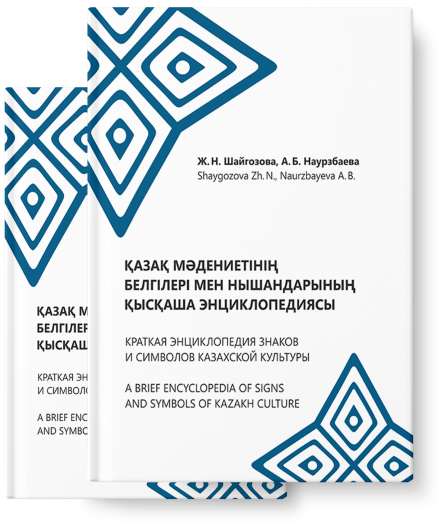
A short encyclopedia of
Signs and symbols of
Kazakh culture

Steppe (isitep – from Old Turkic “is istep” – to do business, to develop) – international archaism denoting the vast spaces of Central Asia [10]. The steppe is a sacred place in the understanding of Kazakhs, which is reflected in figurative expressions: Zher Ana, Atameken, Sary Arqa, Keñ Dala, Ūly Dala (Great Steppe), etc. In the oral-poetic tradition, various associations with the steppe have been preserved: boundless vastness, spirit of freedom, vastness of the soul, argamaki, etc. The vastness of the steppe is associated with wealth and freedom; keñ dala (boundless steppe) – “the prasymbol of the Kazakh nomad associated with infinity” [3]. From ancient times, Turks identified the earth with the Mother and the sky with the Father, which is recorded in mythological representations about the cosmic marriage of two divine principles.
A handful of earth played an important role in the rites and rituals of different peoples. People swore by the earth, used it for various magical acts, took it with them when they left their homeland for a long time or were abandoned by the native side, etc. The ancient Turks believed that the earth had a strong purifying and protective power. The nomads’ reverence for Mother Earth was expressed in the design of their shoes, whose sock was always closed at the top so as not to hurt or wound the earth.

